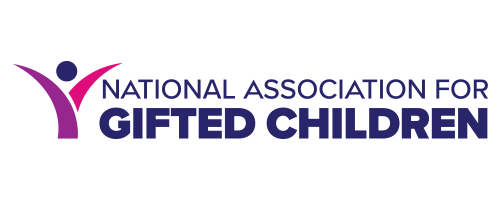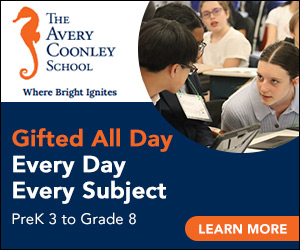How do you put research into practice?
By Celeste Sodergren
You’ve been to the gifted conferences, read the latest books, and discovered the best new ideas from distinguished researchers in the field. Now what? The examples they talked you through in the conference presentation were great, but they don’t look anything like what you have in your district or campus. How do you take what you have learned and put it to good use in your district, campus, or classroom? How do you translate that interesting bit of research into a practical strategy that you can use?
One thing you need to understand is that researchers and educational administrators speak different languages. While we speak the language of empirical research, with strict protocols and reporting standards, educational administrators must engage in more pragmatic and iterative strategies such as design-based, continuous improvement, and action research that leverage the local knowledge and on-the-ground proof-of-concept evidence (Yurkofsky et al., 2020). What you need to do is serve as translator, taking the empirically researched ideas and transforming them into local projects that you can test before you push for full implementation. Here’s what that might look like.
First, try to categorize the big idea of the research you are interested in implementing. It probably falls into one or more of these very broad categories: identification and assessment, service models and service delivery, curriculum, counseling, or family & community interaction. Once you decide this, your next step is to determine who needs to be involved in the decision-making process. For example, if you wanted to try out a small shift in service delivery, that is likely something that could be done by a single teacher in a single classroom, but a change to identification protocols would require buy-in from district leadership.
Second, you need to try your ideas out in a small way. Let’s look at a couple of examples.
Imagine you were a coordinator at a presentation about differentiating using 21st Century skills, and you came away with a set of skills standards and rubrics to work with. This is going to fall under both “curriculum” and “service delivery” (probably as differentiation), so you need to involve teachers, and you may wish to collaborate with content specialists in your district as well. You might decide to test this with a GT teacher and a general education teacher to see how difficult it is to implement in both types of classrooms. Instead of giving them the full list of skills to wade through, you would choose a targeted skill that aligns with the planned curriculum anticipated in the next six weeks, or the next semester, and then determine where it could be worked into the unit plans and lessons. This is where a content specialist would come in handy before taking it to the teachers, especially if you are not familiar with the grade level or content with which you plan to trial the differentiation.
Once you have several examples, you would then work with the teachers to integrate that targeted skill into upcoming lesson plans and develop rubrics for evaluating the skill development and the teachers’ description of the new process. You will want to have a way to measure the skill before and after the intervention, and measure the degree to which the teachers involved actively taught the skill. After the implementation period has passed, you would meet with all involved to review the results, gather feedback, and ask for their thoughts on the implementation. This is a small implementation, or a type of pilot study. After reviewing with your teachers, you might consider making relevant adjustments and then moving toward a second phase with slightly wider implementation. It is always best to make implementation happen gradually and over several cycles of reflection and refinement.
If you are a teacher introducing the skills standards in this same scenario, you could propose the same pilot to your coordinator or principal as an action research project (Efron & Ravid, 2020). That would be something to keep track of in your future leadership portfolio, and is usually a requirement for certain incentive programs, mid-management certification, or teacher-leader programs that you might be working through. As a GT teacher, it can be difficult to find opportunities that count toward standard leadership rubrics, especially when you are the only GT teacher in the school or district. A well-documented action research project would be a great opportunity to showcase your leadership skills. The key at this point would be to clearly document your processes, and to clearly indicate how this pilot would lead to full integration and a continuous improvement cycle (Yurkovsky et al., 2020) in your school. You can find a freely accessible document on the topic of continuous improvement in schools here.
What if it is a district level implementation? You will need to get your GT coordinator or the director who oversees the gifted programming in your district on board before you can begin, and they may have to go up the chain as well. It is best to go in with an open mind. If you have never worked at the district level, you may be unaware of the processes and systems that must be navigated before something like this can happen. The best way to start is with questions. “I learned about this at the NAGC conference. What would it take to do this here? What systems would have to be addressed? Who would need to weigh in on decisions to accomplish that level of change?” Once you have that information, take some time to draw up two or three options for a pilot study and bring those back to your supervisor. Keeping it small, low-cost, and with defined and measurable outcomes that align with your district improvement plan are the keys to getting the go-ahead.
Still not sure? I often hear GT teachers and coordinators say, “This won’t work with my population,” or “I’m the only one, and I’m only there a few hours a week.” There are often special considerations that make it difficult to translate the research you are hearing about into practice, so why not reach out to the researchers themselves and ask for help? Believe it or not, they are usually happy to hear from you! There are always researchers looking for collaborations with schools and districts, graduate students who need to gain skills in research while helping out in real-world situations, and teachers-turned-researchers who just like to lend a helping hand. It never hurts to ask. They may have resources to share, or be looking for someone just like you to work with on a fully funded research project. Another place to look is in your ENGAGE communities. The informal networks formed in and around NAGC abound with sound advice and experience. You never know what opportunities may arise until you take the first step, reach out, and put your new learning into practice.
References
-
Efron, S. E., & Ravid, R. (2020). Action Research in Education, 2nd Ed. The Guilford Press.
-
Yurkofshy, M. M., Peterson, A. J., Mehta, J. D., Horwitz-Willis, R., & Frumin, K. M. (2020). Research on continuous improvement: Exploring the complexities of managing educational change. Review of Research in Education, 44(1), 403-433.
-
Best, J., & Dunlap, A. (2014). Continuous Improvement in Schools and Districts: Policy Considerations. McREL International.
Celeste D.C. Sodergren, PhD Candidate at Baylor University, is a member of NAGC's Research & Evaluation Network.


